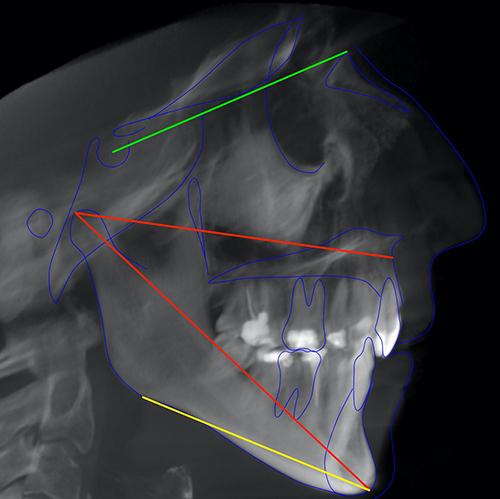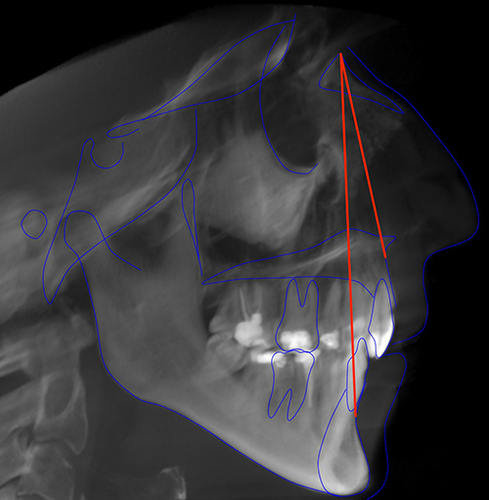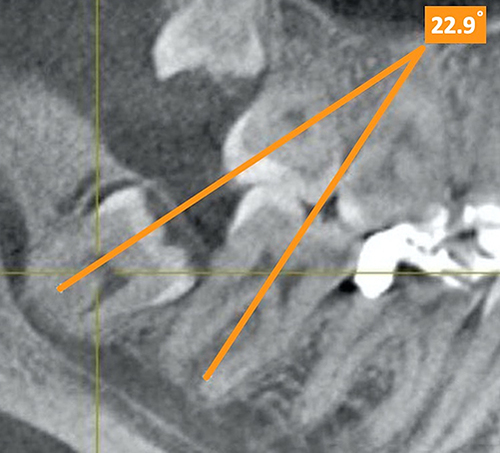Figures & data
Figure 1 A CBCT-derived lateral cephalogram showing SN-GoGn angle (red), and effective length of maxilla (green), and effective length of mandible (yellow).

Figure 3 Pell & Gregory’s classification of ramus relation and impaction depth of lower third molars, (A) Class 1, Level A, (B) Class 2 Level B, (C) Class 3 Level C.

Figure 6 Archer l classification of upper third molars, (A) Type A, (B) Type B, (C) Type C, (D) Type D, (E) Type E.

Figure 7 Archer ll classification of upper third molars, (A) mesioangular, (B) distoangular, (C) vertical, (D) buccoangular, (E) horizontal.

Table 1 Descriptive Characteristics of Study Participants
Table 2 Association Between Facial Types and Study Variables (Categorical)
Table 3 Association Between Facial Type and Study Variables (Continuous)
Table 4 Association Between Skeletal Profile and Study Variables (Categorical)
Table 5 Association Between Skeletal Profile and Study Variables (Continuous)
Table 6 Association Between Effective Length of Maxilla with Upper Third Molar Variables
Table 7 Association Between Effective Length of Mandible with Lower Third Molar Variables
Table 8 Correlation Between the Continuous Variables



